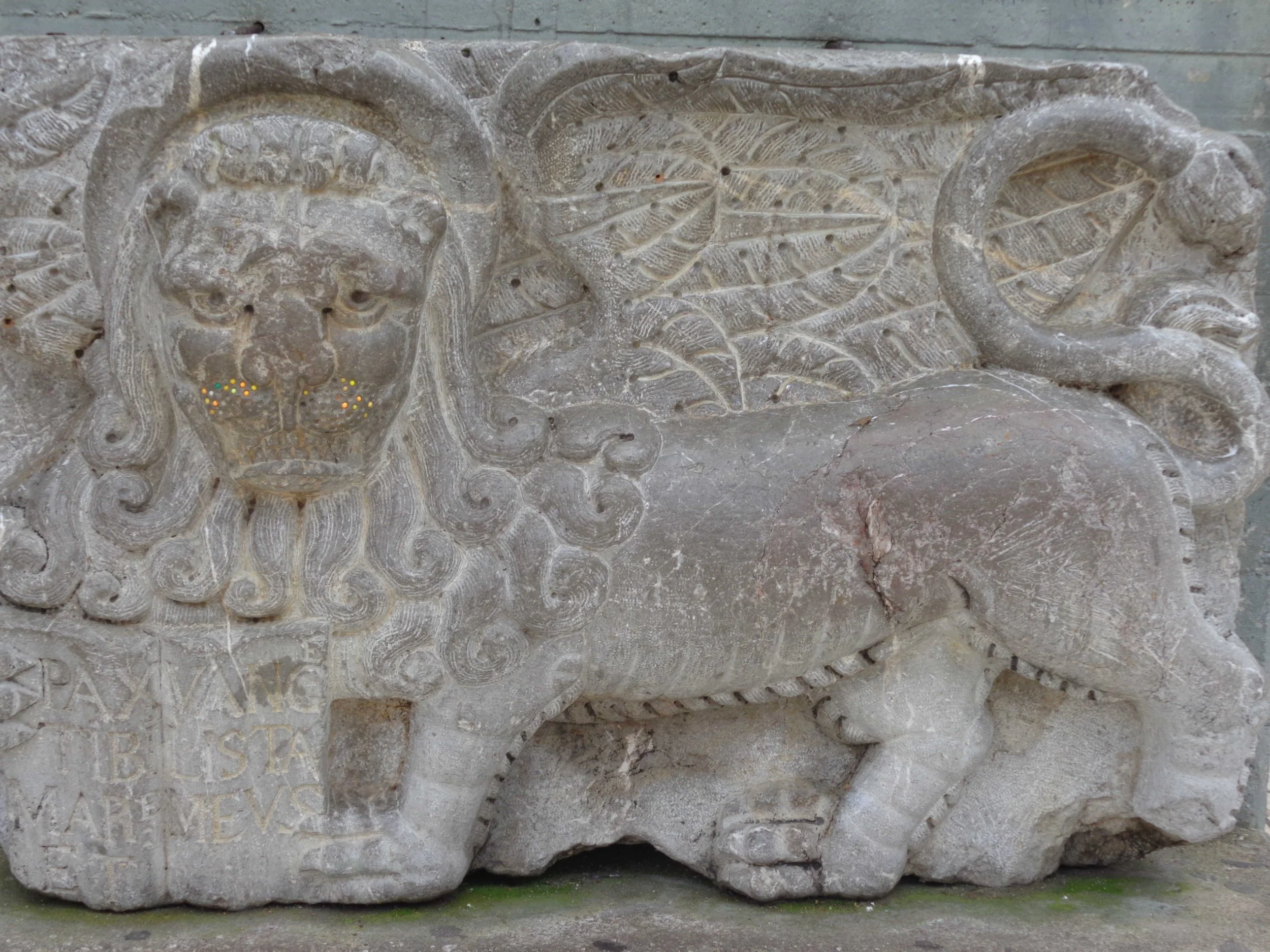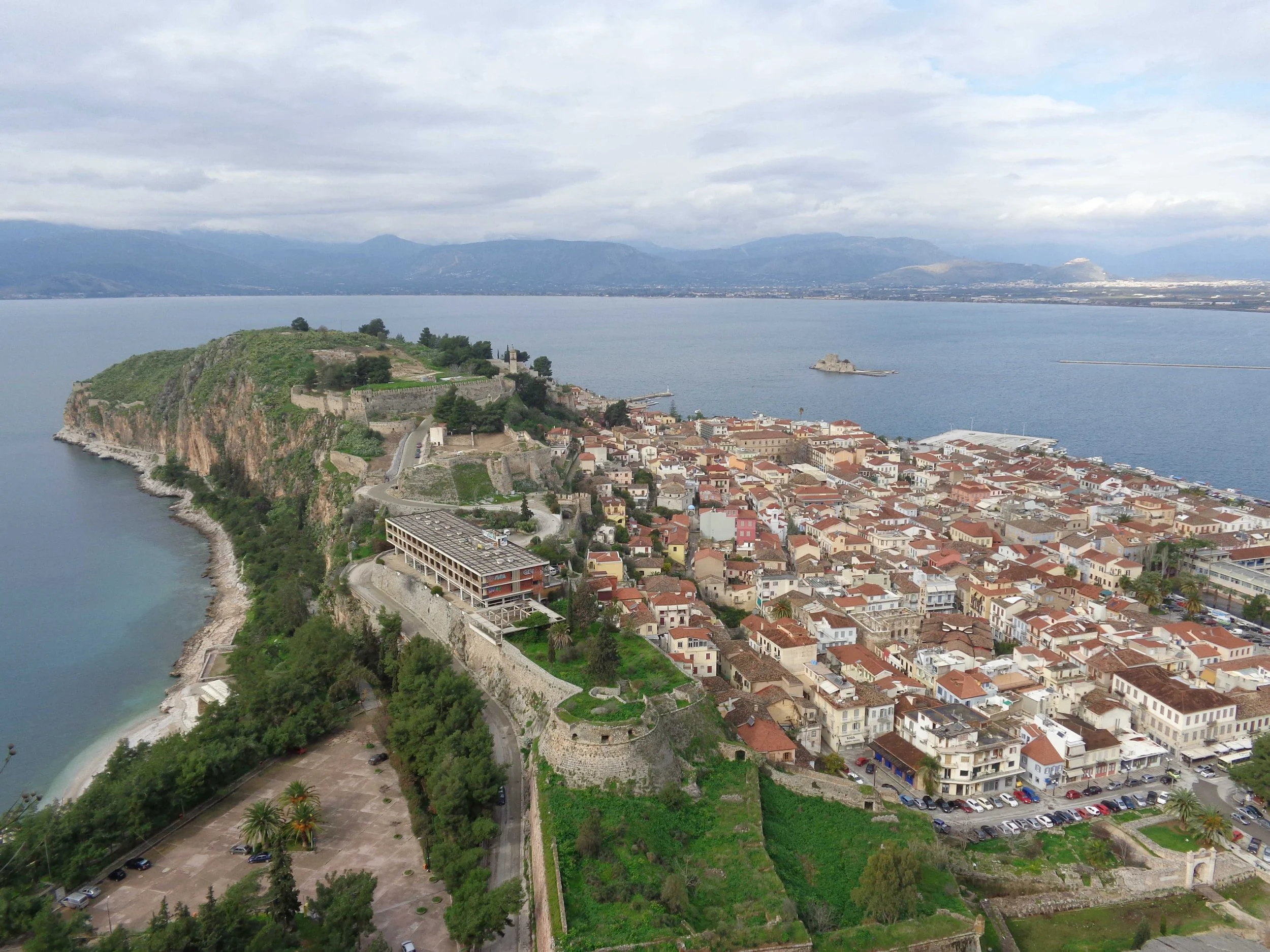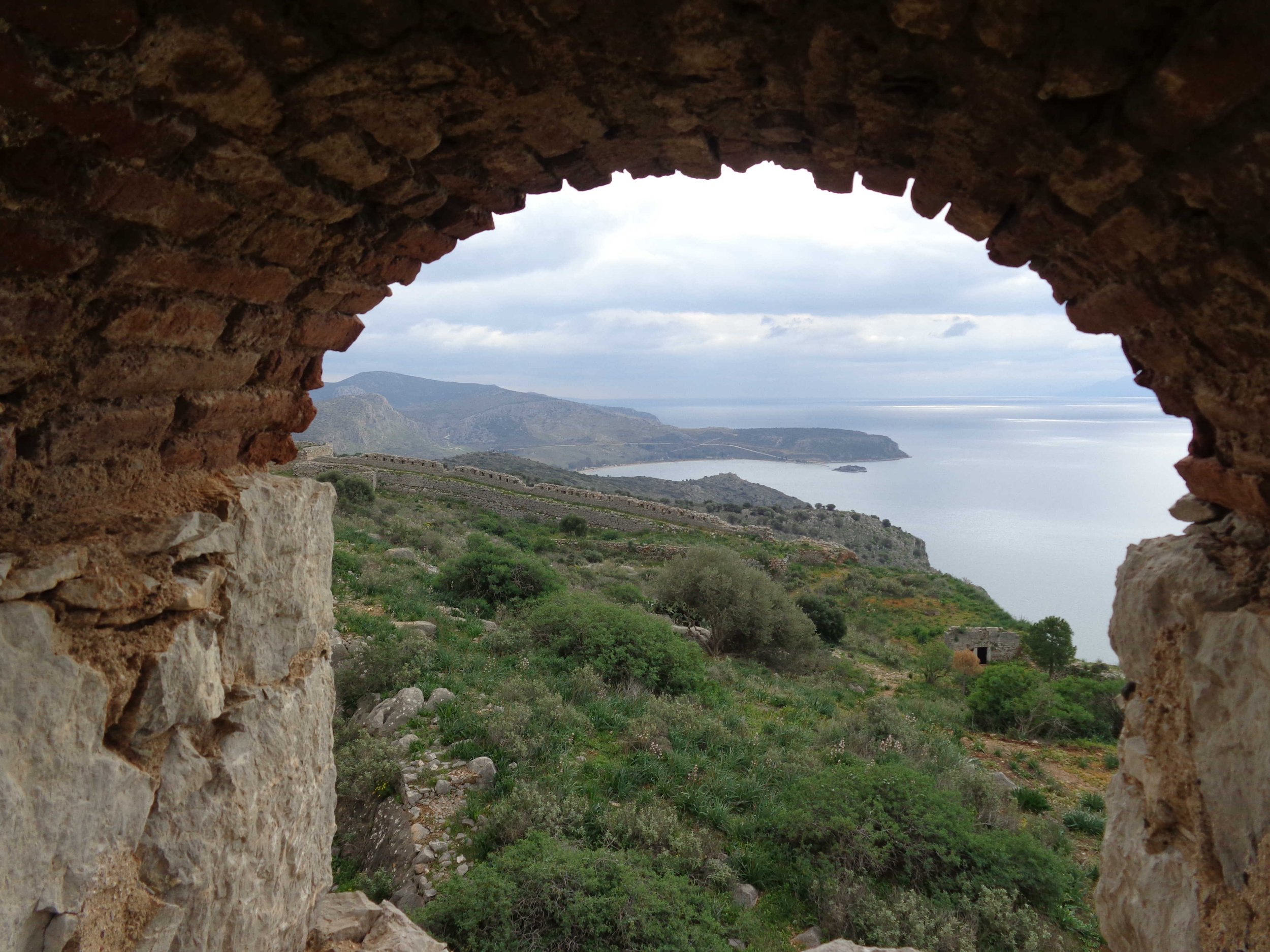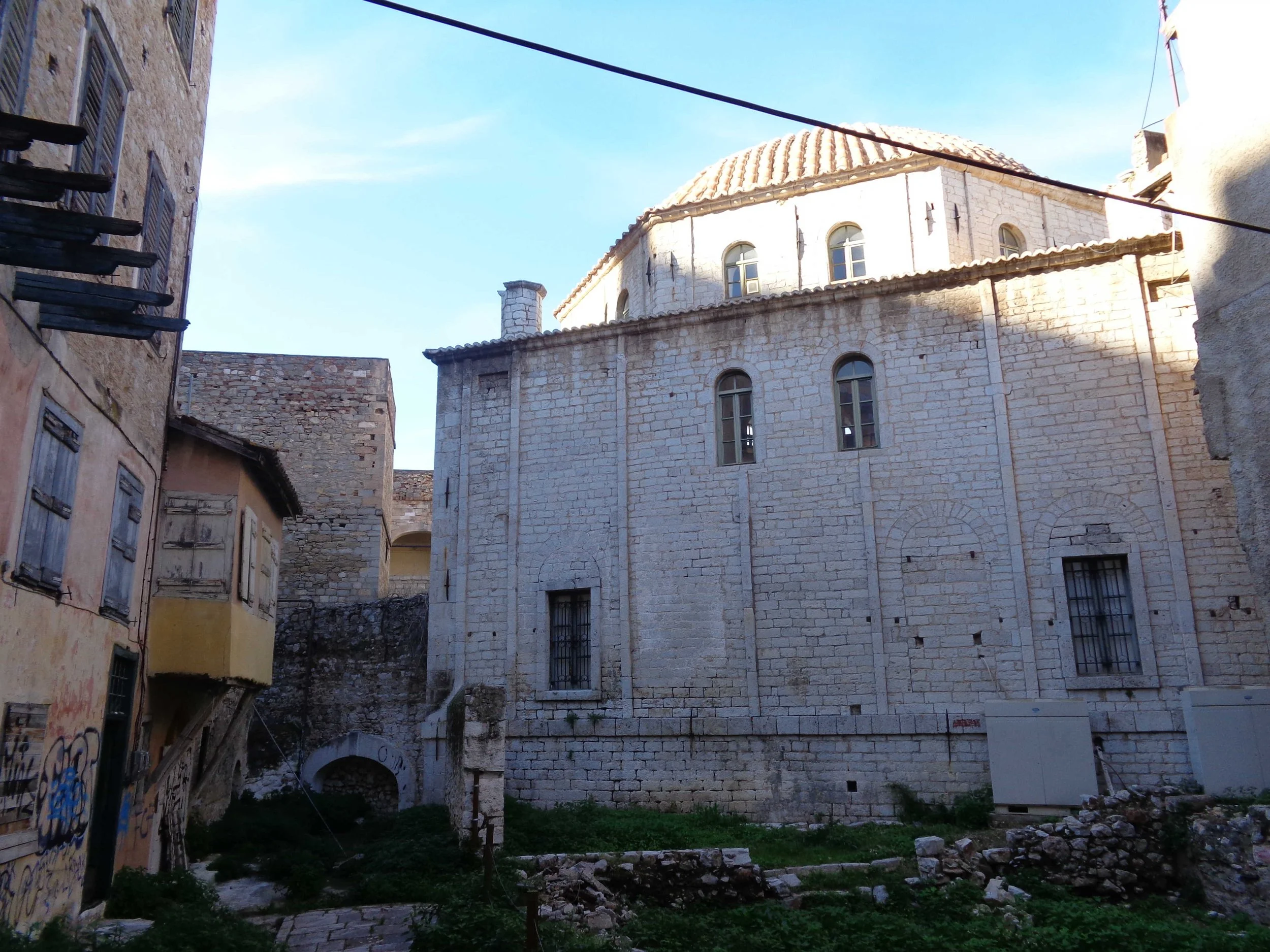History of Nafplio from the late medieval period to the Greek war of Independence
The troubled history of the Peloponnese, from the first collapse of the Byzantine Empire in the early 13th century AD, to the outbreak of the Greek war of Independence in the early 19th century AD, defined the layout of Nafplio. The powerful fortress of Acronafplia and its safe port always attracted numerous aspiring conquerors.
After the period of Frankish rule, the Venetian Republic and the Ottoman Empire dominated the city.
During the first period of Venetian rule, from 1389 to 1540 AD, Nafplio changed radically. The walls of Acronafplia were rebuilt or reinforced, the port was upgraded and a fort, nowadays called Bourtzi, was built on the rocky island that overlooks the entrance to the port. Last but not least, the Venetian engineers expanded the city against the sea, forming what we know today as the old city of Nafplio. Nafplio became a trading and military centre and was a prosperous and densely populated city.
During those 150 years, the Ottoman Turks launched repeated attacks on the city. Those attacks were unsuccessful due to the powerful fortification of the city. In the end they set up their artillery on Palamidi hill, above the city, which was unfortified at the time. In this way, they actually levelled the city, forcing the Venetian into surrendering Nafplio in 1540. That was the beginning of the first period of Ottoman rule. Nafplio became the capital city of the Peloponnese, while its port developed into an important centre of import and export trade. It was during that period that a mosque, nowadays called Trianon, was built on the eastern side of Syntagmatos (Constitution) Square.
That period ended in 1686 AD, when Nafplio fell again into Venetian hands. The second period of Venetian rule was from 1686 to 1715. Even though it lasted for such a short time, it was of great importance for the city. During that period the Palamidi fortress, a masterpiece of the Venetian art of fortification was constructed, the fortress of Acronafplia was upgraded, the Arsenal of the Venetian fleet, which is nowadays the Archaeological Museum of the city, was built, as well as the churches of Saint Spyridon and Saint Nicholas. Nafplio was once again the capital city of the Peloponnese, a prosperous trading, naval and military centre.
The general decline of Venice took place in the 18th century ADso when a huge Turkish army attacked Nafplio in 1714 AD, the Venetianss failed to successfully defend it. This is how the second period of Ottoman rule, as well as the gradual decline of the city began. Tripolis became the capital city of the Peloponnese and trade fell into decline. Nafplio became a provincial Ottoman city with an oriental atmosphere of decadence, as we know from 19th century travelers. Nevertheless, it was during that period that important monuments of the city were built, such as the mosque, nowadays known as “Vouleftiko” (deriving from the Greek word “vouli”, that means parliament, as it was the seat of the Greek parliament during the Greek war of Independence, as well as the Islamic school that nowadays houses some departments of the local Ephorate (public service) of Antiquities.
To sum up this brief presentation of the history of Nafplio, from the late 14th to the early 19th century AD, we could say that, in a weird way, the miseries of the wars initiated by the successive conquerors of the city, were somehow conducive to its present prosperity. The unique atmosphere of the old city of Nafplio, created by its Venetian, Ottoman, pre-neoclassical and neoclassical monuments, is a major tourist attraction of the mainland of Greece.









